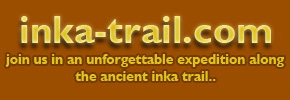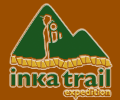|
|
|
|
| |
Security - Peru
- Take normal precautions against pickpockets
- Carry a copy of identification documents. Keep originals and
your valuables in the safety deposit box of your
hotel and make sure to list down what you deposit and verify
the responsibility assumed by the establishment.
- Carry valuables discreetly. Do not carry large amounts of
cash. Keep an eye on your bags and luggage.
- Do not carry suitcases, bags or sac packs on your back.
- Do not exchange money out in the street.
- Do not walk around late at night through areas with poor lighting
or without a companion
Telephone - Peru
- International and long distance national calls can be made
from public pay phones. Country and city codes
are normally shown in the telephone booths.
- To make an international call, dial: 00 + country code +
city code + telephone number.
- To call from one city to the next, dial: 0 + city code +
telephone number.
- Public phones take coins as well as cards, which are sold
in stands and supermarkets. Make sure you are
buying the card corresponding to the telephone company of
the phone you want to use. No collect calls can
be made from pay phones.
- To obtain telephone information, dial 103 (service is in
Spanish)
Internet - Peru
- The main cities in the country do have public Internet booths.
- The average cost per hour is US$ 1,3.
Health Matters - Peru
- Only drink bottled or previously boiled water.
- Be careful with raw vegetables and fruits.
- Avoid eating from street vendors.
- Rest on the first day of your arrival to the Highlands,
and consume light meals to prevent altitude illness
(soroche). Drinking "coca tea" is recommended.
- If you travel to the Highlands or to the Jungle, make sure
to carry insect repellent and a raincoat.
- To obtain medical services, contact the staff of your hotel
or travel agent.
- If you wish to take travelers' insurance, contact your favorite
travel agency.
Banks - Peru
Banking hours in Peru are normally from Monday to Friday,
from 9 a.m. to 6 p.m. In addition, most banks open for the
public half day on Saturdays. In the streets of the main cities
there are teller machines installed by the different banks.
Money Exchange - Peru
EIt is recommended that money should be exchanged in hotels,
banks and authorized money exchange offices (Service hours:
9:30 a.m. to 6 p.m., approximately). The exchange rate against
the US Dollar is variable. Inquire before changing your money.
For exchanging other currencies inquiry at money exchange
offices
Nightlife - Peru
Most of the cities of Peru have a wide variety of night life
entertainment. Information about places of interest can be
obtained where you are staying. If you wish to enjoy typical
Peruvian music, you can visit the so-called "peñas".
In Lima, the most popular discotheques, pubs and night clubs
are in the Districts of Miraflores, San Isidro and Barranco.
In other cities they are normally found in city centers (main
square and vicinity).
Food and Beverage - Peru
Peruvian cuisine offers a great variety of dishes typical
of the Coast, the Highlands and the Jungle. Always first ask
about their ingredients, since some dishes can contain hot
pepper or be highly spiced. You will also find establishments
where international food is prepared.
As far as drinks are concerned, try the very Peruvian Pisco
(grape brandy) in any of its various recipes, as well as "chicha
morada" (purple corn juice) "chicha de jora"
(fermented red or yellow corn juice)and agüaje juice,
made from a tropical Jungle fruit. |
| |
|
|
| |
Weather in Cusco
Cusco has a temperate climate with year round temperatures fluctuating
between 14º - 16ºC, with warm days and cold nights. The
rainy season in Cusco is from December to March .
Machu Picchu has a semi-tropical climate, with warm and humid days
and cold nights. The rainy season in Machu Picchu is from November
to March, so be prepared.
The wet months are January to April, when roads are often closed
by landslides or flooding.
The best months for visiting Machu Picchu are from April to October.
We Recommend you to:
- Use boots during treks and sneakers during long walks.
- Drinking lots of liquids on long excursions, specially during
the Inca Trail
- Always taking an umbrella or rainwear.
What to Bring
- Hiking boots, sneakers and shoes.
- Long pants or slacks
- Long-sleeved shirts.
- Several T-shirts
- Sweaters and a jacket.
- Rain wear (you never know when will rain even if its the dry season).
- Camera.
- Insect Repellent and sun block (sun is always stronger in such
altitude).
- Personal toilet items.
- Personal first Aid kit.
- Flashlight.
- Wash kit, water bottle and water purifying tablets.
- A light backpack.
- Change of underwear.
- Gloves, scarf, wool socks and a hat or cap.
- A towel and toilet paper.
Water
The tap water in most of Peru is potable, but the chemical content
varies from place to place. To avoid problems, we recommend that
you always drink bottled water.
Health
Because you are visiting Andean areas, don't forget to take precautions
to avoid altitude sickness if you are prone to it. Be sure to try
a hot tea or an infusion of coca leaves on arrival at altitude.
During your first day move slowly and eat lightly, resting the first
couple of hours.
Heights
Cusco City: 3,360 m.a.s.l.
Machu Picchu: 2,400 m.a.s.l.
Urubamba Valley: 2,850 m.a.s.l.
Inca Trail highest point: 4,200 m.a.s.l.
Park Regulations
The Inca Trail is part of the Machu Picchu Sanctuary, a protected
area of 32,592 hectares, managed by the National Institute of Natural
Resources, INRENA. Every visitor must obey park regulations prohibiting
littering, cutting or damaging trees, removing or damaging stones
of ruins and the Trail, removing plants, killing animals, lighting
open fires or camping in the archeological sites (Only authorized
campsites can be used).
* If you need any further information
about Peru, do not hesitate to contact us. |
| |
|
|
|










